Under the G7 Partnership for Global Infrastructure and Investment, the Mumbai-Ahmedabad High Speed Railway Corridor project is moving forward in India. Adopting Japan’s Shinkansen bullet train technology, the project aims to be as successful a model as the Delhi Metro, which brought multiple changes to society and industry.
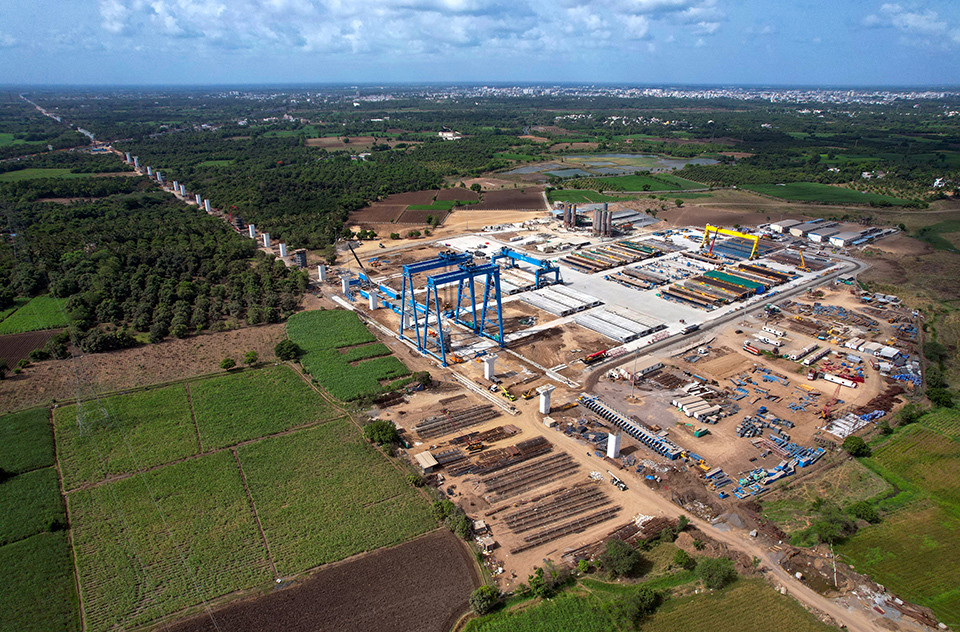
The Mumbai-Ahmedabad High Speed Railway Corridor, which is currently under construction. Once its operation begins, the line is expected to have wide-ranging impacts, from improved convenience to a reduction in greenhouse gas emissions and revitalization of the surrounding area. NHSRCL
Japan’s railways are renowned for their high level of safety and precise technological capabilities, as well as their punctual operations. A prominent example is the Shinkansen bullet train. Countries around the world have likewise introduced high-speed rail systems in recent years, aiming to upgrade the convenience of their transportation networks. One of them, India, is adopting Japan’s bullet train system for the first time for its Mumbai-Ahmedabad High Speed Railway Corridor (MAHSR), a 508-km-long, high-speed rail line that will link the western metropolises of Mumbai and Ahmedabad.
Using rolling stock based on the Shinkansen’s E5 series, which boasts speeds of up to 320 km/h, the new train will sharply reduce travel time between the two cities, from the current six hours to just two hours. Air travel, which is now the preferred method for completing the route, is projected to see more than 60% of its customers shift to the new bullet train, with the flexibility to get on and off en route and easy access to other transportation.
MAHSR is one of the projects promoted under the Partnership for Global Infrastructure and Investment (PGII), a shared G7 commitment launched in 2022 to advance public and private investments in sustainable, inclusive, resilient and quality infrastructure. Through partnership with governments, the private sector, and financial institutions, the G7 aims to mobilize up to 600 billion dollars by 2027, in order to narrow the infrastructure investment gap in partner countries. Japan is also delivering infrastructure investment around the world to mobilize more than 65 billion dollars in infrastructure assistance and private capital over the same period.
The process of building a huge piece of infrastructure in a country that differs in culture and mindsets is a herculean task. However, Japan’s forte in the MAHSR project is its rich experience promoting subway construction projects across India for more than two decades. Notably, the track record and expertise gained through construction of the Delhi Metro, Japan’s first project in India, form a strong foundation.
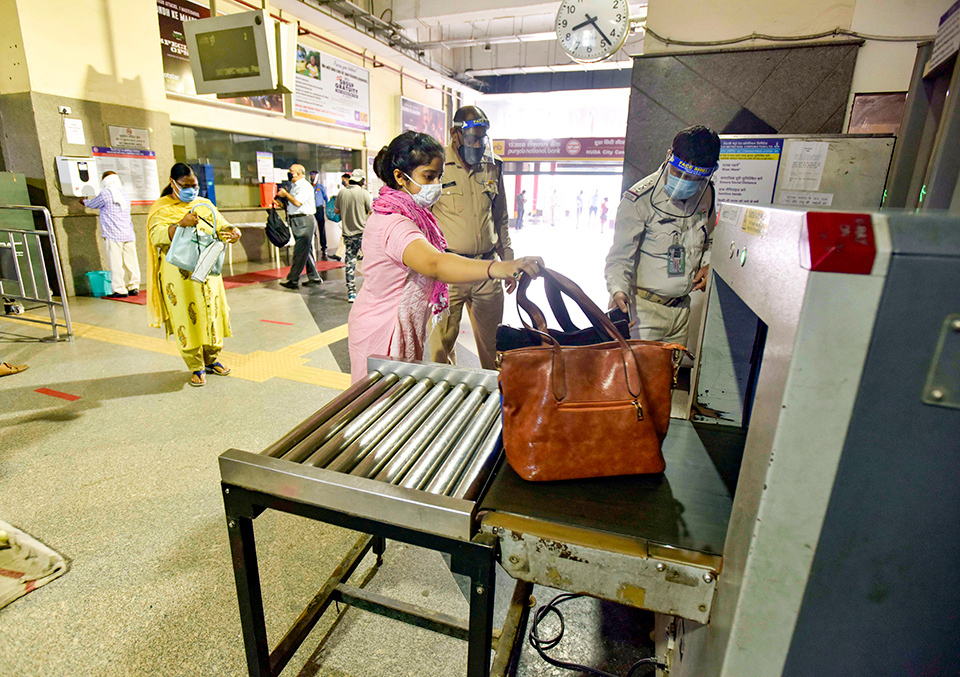
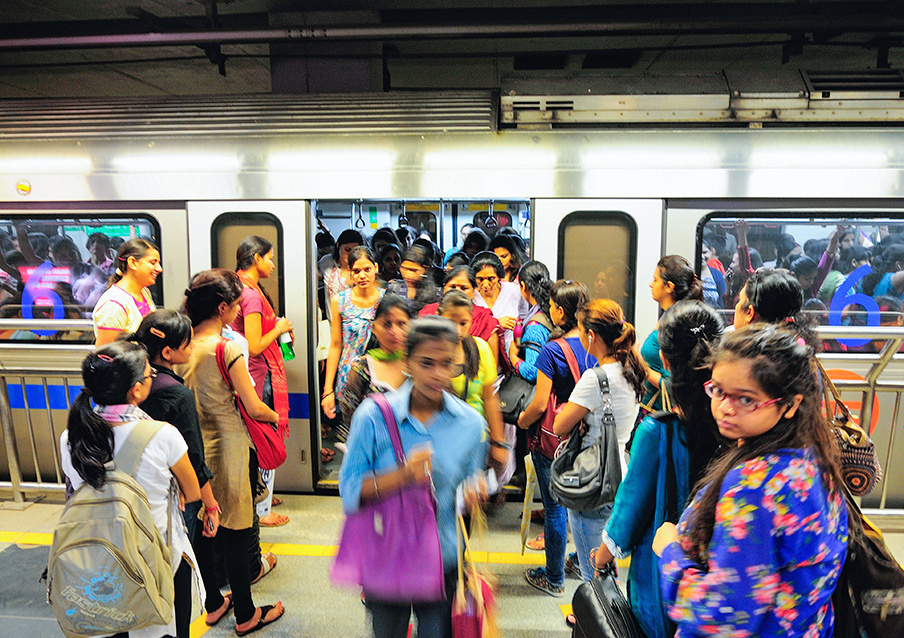
Due to serious security problems within India’s public transportation system, baggage screening similar to that at an airport is conducted at the entrance to each station of the Delhi Metro, and security guards are positioned on the platforms. What is more, the introduction of women-only carriages has led to an increase in the number of women working at companies located near to subway stations, having a significant impact on the overall employment rate. GETTY IMAGES
Due to serious security problems within India’s public transportation system, baggage screening similar to that at an airport is conducted at the entrance to each station of the Delhi Metro (top), and security guards are positioned on the platforms. What is more, the introduction of women-only carriages (bottom) has led to an increase in the number of women working at companies located near to subway stations, having a significant impact on the overall employment rate. GETTY IMAGES
A good example is safety awareness at construction sites, which was low in India at the time. Japanese construction contractors, consultants, and Japan International Cooperation Agency (JICA) staff worked together to distribute helmets and other personal protective equipment (PPE) to around 40,000 Delhi Metro construction workers, but these went unworn at first. To combat this, with the cooperation of the Delhi Metro Rail Corporation, a special regulation was enacted to prevent entry to construction sites without PPE.
That resulted in a big, positive impact, and also led to the practice being adopted by other subway projects. “It is crucial to take measures that consider a country’s unique environment and culture,” said ABE Reiko, Corporate Officer of Oriental Consultants Global Co., Ltd., who was involved in the Delhi Metro project and whose company is also one of the firms consulting on the MAHSR.
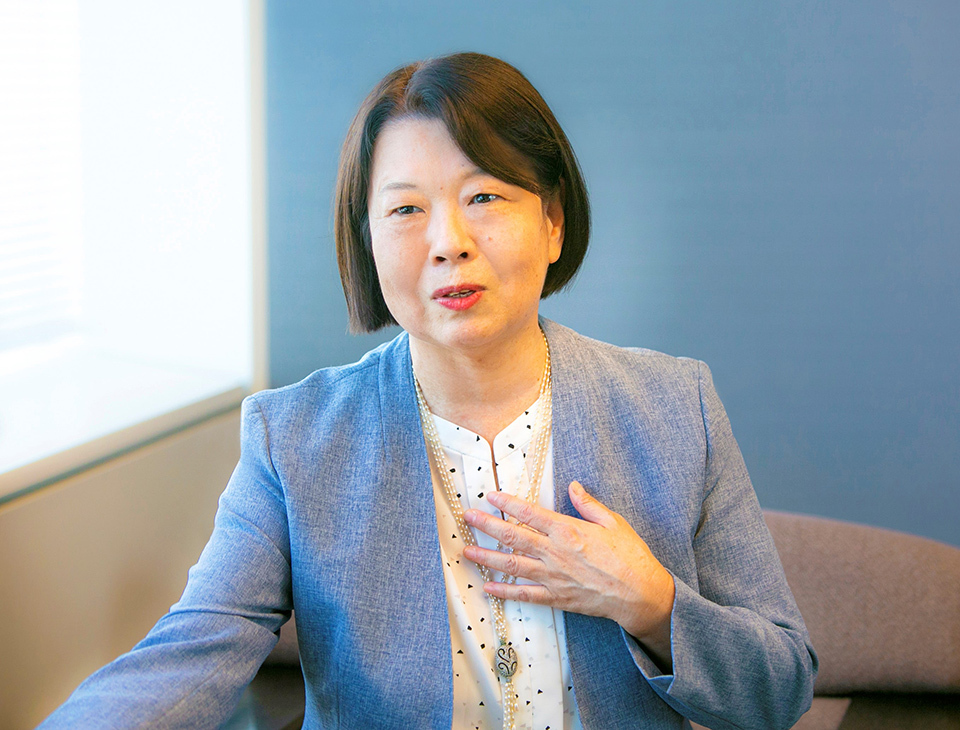
ABE Reiko, Corporate Officer of Oriental Consultants Global and Chairperson of Oriental Consultants India, worked in tunnel construction in places such as Norway and Taiwan. Since 2007, she has worked as a consultant on subway construction projects in New Delhi, the capital of India, among other cities.
Over 20 years since launching in 2002, the Delhi Metro is now one of the largest subway systems in the world, with a daily average of more than 5 million passengers. And, with some of the local staff who were involved in its launch now transferring their knowhow to other subway projects, the metro has led to a boost in the overall level of civil engineering in the country. For the MAHSR project, domestic firms mainly handle the phase of civil construction work, rather than relying on foreign companies.
“One day,” recounted Abe, “when I was traveling in an auto rickshaw, we got stuck in traffic due to subway construction. The driver then told me with pride, ‘Madam, this is our Metro! Great, isn’t it?’ I have never been so happy. His words inspire and motivate me even now.” Just like the Delhi Metro, the MAHSR bullet train project has the potential to bring great change and growth to the country as a whole. “Eventually, our aspiration is to spur the development of a domestically self-supporting system. We will try our best so that one day, Indian people will say, ‘Madam, this is our bullet train!’”
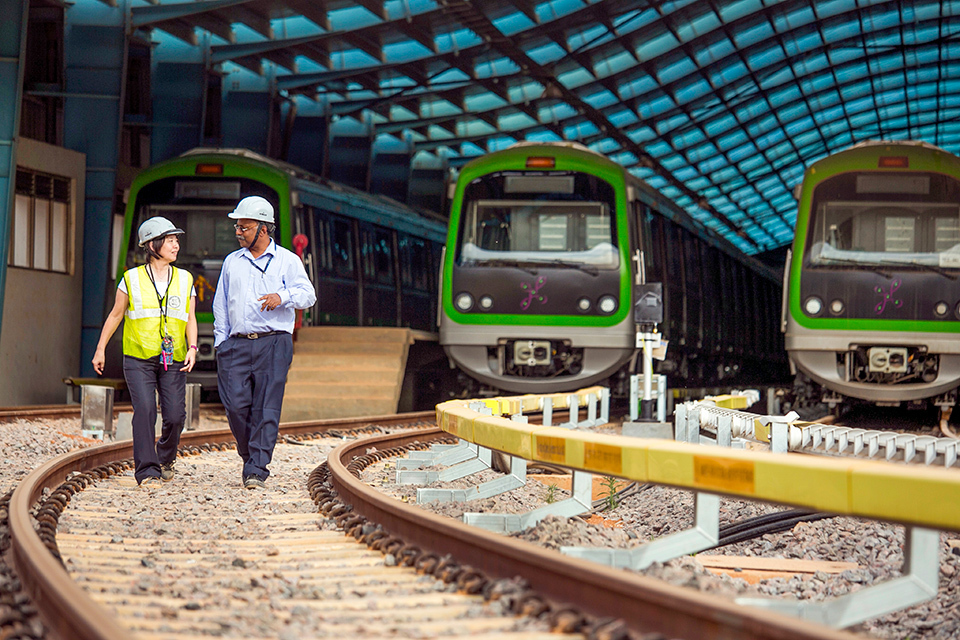
Abe (left) making the rounds of the Delhi Metro with a local staff member at the time of its construction. The project focused on local human resource development in anticipation of post-opening operation. “Our mission is to see the local staff become self-sufficient. Our work will only be done when they tell us they no longer need a consultant,” said Abe. ORIENTAL CONSULTANTS GLOBAL






























